
The Unpredictable Nature of Canadian Oil & Gas Industry
The Canadian oil and gas industry is a vast and complex sector that plays a significant role in the country’s economy. With its rich natural resources and diverse landscapes, Canada has been a powerhouse in the production and export of oil and gas for decades. But despite its lucrative potential, the industry often faces challenges and uncertainties that can make it a volatile and unpredictable market.
From fluctuating oil prices to changing government regulations, the Canadian oil and gas industry is constantly navigating a landscape that is rife with uncertainties. These uncertainties can stem from various factors, including geopolitical tensions, environmental concerns, technological advancements, and global market trends. As a result, companies operating in this industry must be prepared to adapt quickly to changing circumstances and make strategic decisions to stay competitive.
One of the key challenges facing the Canadian oil and gas industry is the issue of pipeline capacity. With growing production levels and limited pipeline infrastructure, the industry has been grappling with constraints that have led to bottlenecks in getting its products to market. This has created a situation where companies must rely on less efficient means of transportation, such as rail or trucking, which can be costly and pose environmental risks.
In addition to infrastructure challenges, the Canadian oil and gas industry also faces scrutiny and pushback from environmental and indigenous groups. Issues such as pipeline approvals, carbon emissions, and land rights have become hot-button topics that can impact the industry’s projects and operations. As a result, companies must navigate a complex regulatory environment and engage in meaningful dialogue with stakeholders to address concerns and build trust.
Despite these challenges, the Canadian oil and gas industry continues to be a major contributor to the country’s economy, providing jobs, revenue, and energy security. The industry supports a wide range of sectors, from manufacturing to transportation, and plays a crucial role in supporting Canada’s energy needs. With advancements in technology and innovation, companies are finding new ways to extract resources more efficiently and sustainably, helping to ensure the industry’s long-term viability.
As the Canadian oil and gas industry continues to evolve and adapt to changing circumstances, one thing remains certain – its unpredictable nature. From market fluctuations to regulatory hurdles, companies must be agile and proactive in responding to challenges and seizing opportunities. By staying informed, collaborating with stakeholders, and investing in sustainable practices, the industry can navigate its uncertainties and thrive in an ever-changing landscape.
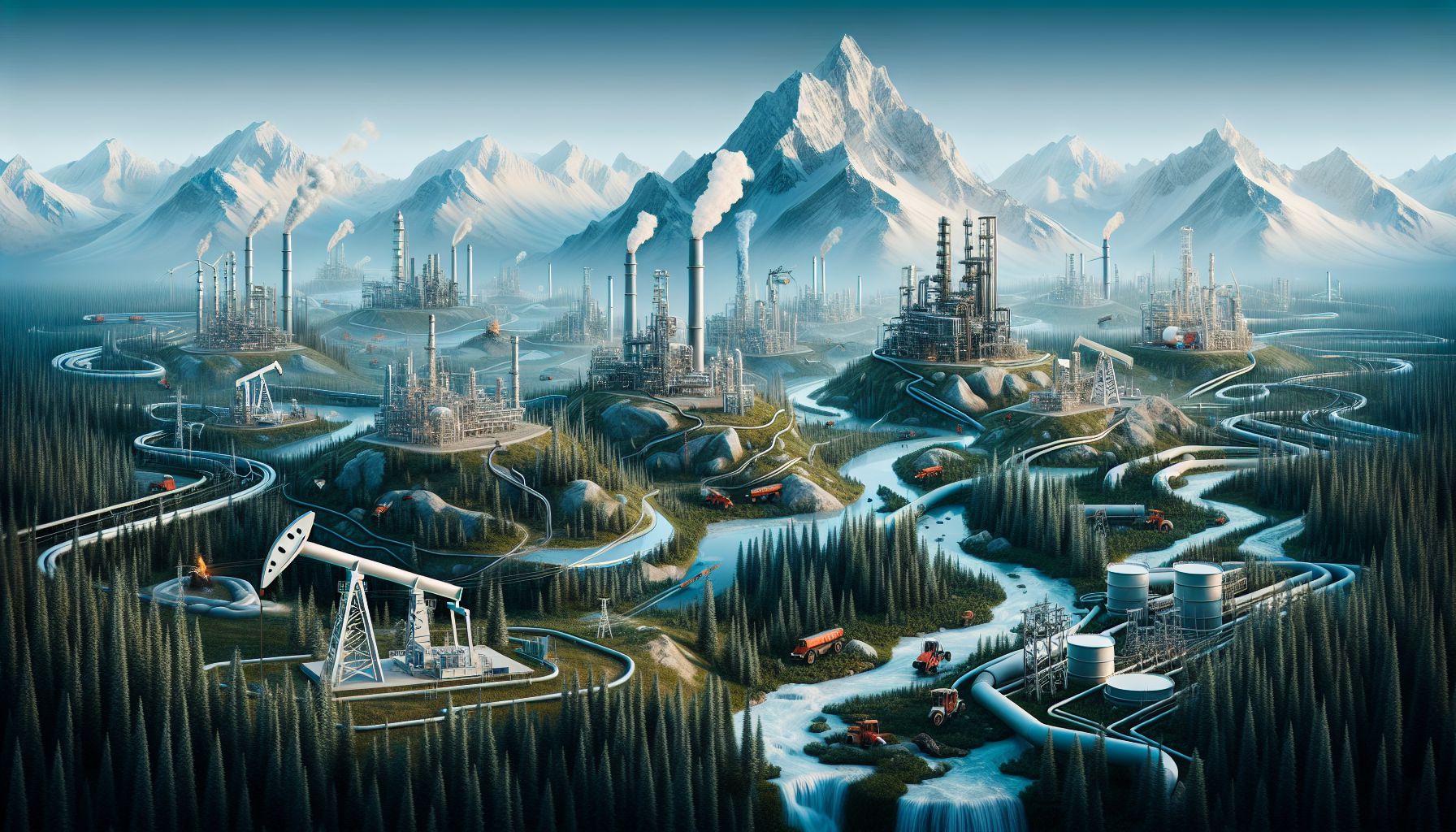
The Ever-Evolving Landscape of Canada’s Oil & Gas Industry
Canada’s oil and gas industry is one of the most dynamic and vibrant sectors in the country, with a rich history dating back to the early days of exploration and development. The industry plays a crucial role in driving the Canadian economy, providing jobs, revenue, and energy resources to both domestic and international markets. However, like any industry, the oil and gas sector is not without its challenges and complexities. In recent years, the industry has faced a series of obstacles that have reshaped the landscape and forced companies to adapt and evolve in order to survive and thrive in a rapidly changing environment.
One of the biggest challenges facing the Canadian oil and gas industry is the ongoing debate around environmental sustainability and climate change. As the world grapples with the urgent need to transition to a low-carbon economy, the oil and gas industry has come under increasing scrutiny for its contribution to greenhouse gas emissions and environmental degradation. This has led to a growing demand for cleaner, more sustainable energy sources, putting pressure on oil and gas companies to invest in renewable technologies and reduce their carbon footprint.
In addition to environmental concerns, the Canadian oil and gas industry also faces economic challenges, including fluctuating oil prices, regulatory uncertainty, and market volatility. The industry is highly dependent on global oil prices, which can be influenced by a wide range of factors, including geopolitical events, supply and demand dynamics, and macroeconomic trends. This makes it difficult for companies to predict future revenues and plan for long-term growth, leading to heightened levels of uncertainty and risk.
Despite these challenges, the Canadian oil and gas industry remains a key driver of the economy, contributing billions of dollars to GDP and supporting hundreds of thousands of jobs across the country. The industry has also made significant advancements in technology and innovation, allowing companies to extract oil and gas more efficiently and sustainably than ever before. This has helped to improve productivity, reduce costs, and minimize environmental impact, while also opening up new opportunities for growth and diversification.
As the industry continues to evolve and adapt to a changing market landscape, companies must remain agile and forward-thinking in order to stay competitive and resilient in the face of adversity. This requires a willingness to embrace new technologies, invest in research and development, and collaborate with industry partners and stakeholders to find innovative solutions to complex challenges. By doing so, the Canadian oil and gas industry can continue to play a vital role in driving economic growth, creating jobs, and meeting the energy needs of a rapidly changing world.

The Intricacies of the Oil & Gas Industry in Canada
The oil and gas industry in Canada is a complex and multifaceted sector that plays a significant role in the country’s economy. From exploration and production to transportation and refining, there are many moving parts that make up this vital industry. In this blog post, we will delve into some of the lesser-known aspects of the oil and gas industry in Canada, highlighting the challenges and opportunities that exist within this dynamic field.
One of the most intriguing aspects of the oil and gas industry in Canada is its sheer size and scope. With vast reserves of oil and natural gas scattered across the country, Canada is one of the world’s leading producers of energy resources. From the oil sands in Alberta to the offshore drilling sites in the Atlantic and Pacific regions, there are endless opportunities for exploration and production in Canada.
However, with great opportunity also comes great challenge. The oil and gas industry in Canada is not without its controversies, particularly when it comes to environmental concerns. The extraction and processing of oil and natural gas can have significant impacts on the environment, from air and water pollution to habitat destruction and greenhouse gas emissions. As a result, the industry is facing increasing pressure to adopt more sustainable practices and technologies to mitigate these negative effects.
Despite these challenges, the oil and gas industry in Canada continues to thrive, thanks in part to its innovative approach to technology and exploration. One area where Canada excels is in the development of new extraction techniques, such as hydraulic fracturing and horizontal drilling, which have revolutionized the industry and allowed for the exploitation of previously inaccessible reserves.
In addition to technological advancements, the oil and gas industry in Canada also benefits from a highly skilled workforce and a strong regulatory framework. With stringent safety and environmental standards in place, Canada has established itself as a global leader in responsible resource development. This commitment to sustainability and accountability has helped to attract investment and ensure the long-term viability of the industry.
Looking ahead, the future of the oil and gas industry in Canada is bright, with continued opportunities for growth and innovation. As demand for energy resources continues to rise around the world, Canada is well positioned to meet this demand and solidify its place as a key player in the global energy market. By embracing new technologies, practices, and partnerships, the oil and gas industry in Canada can continue to thrive while also addressing the environmental challenges that lie ahead.
In conclusion, the oil and gas industry in Canada is a fascinating and dynamic sector that plays a vital role in the country’s economy. With vast reserves, innovative technologies, and a strong regulatory framework, Canada is well positioned to navigate the challenges and opportunities that come with being a major player in the global energy market. By continuing to invest in sustainable practices and technologies, the industry can ensure a prosperous future for generations to come.
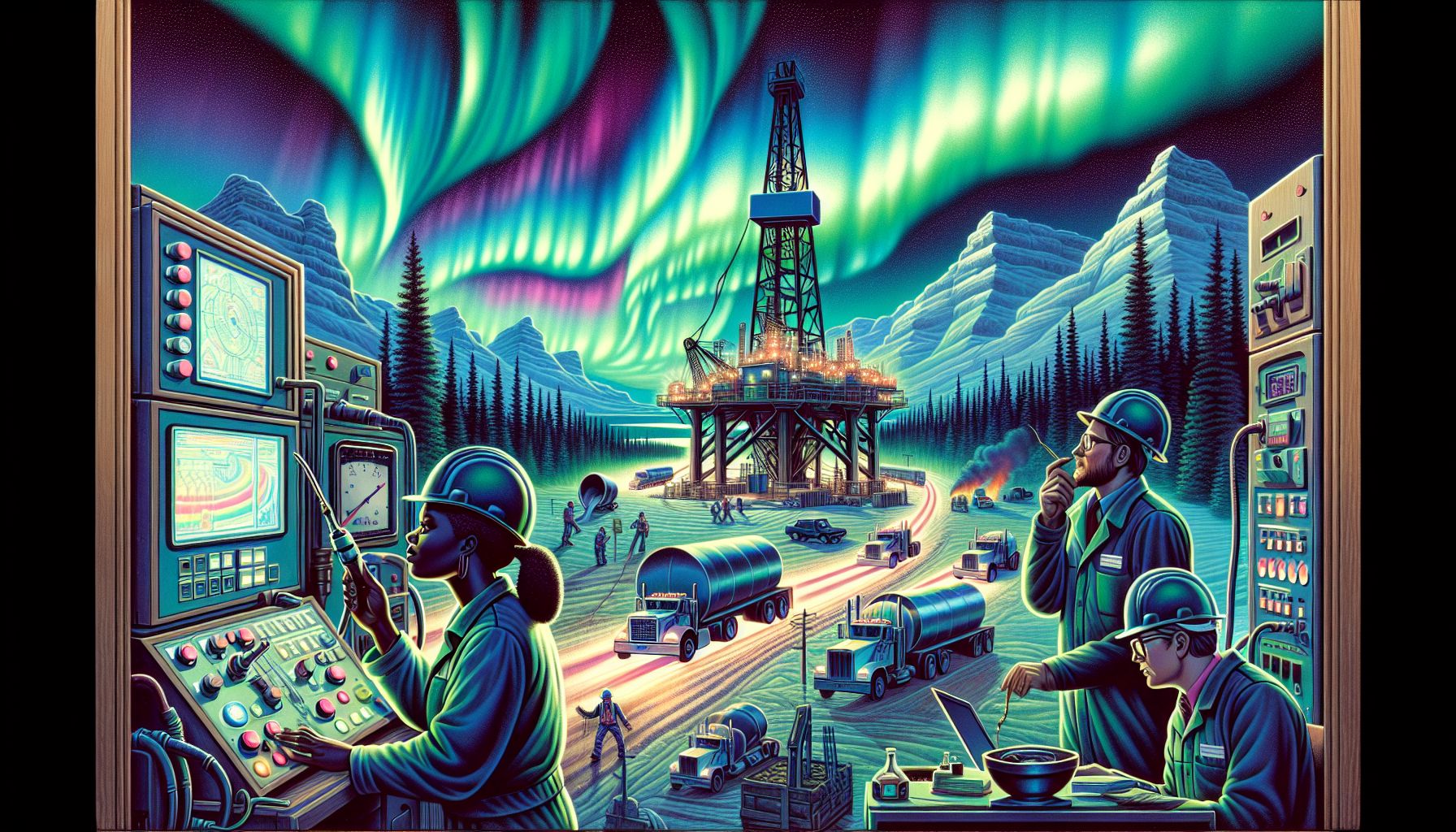
The Iridescent World of Canada’s Oil & Gas Industry
In the vast landscape of Canada, lies a hidden gem that has been a significant player in shaping the country’s economy – the oil and gas industry. This industry has been a vital part of Canada’s history, providing jobs, revenue, and resources for decades. From the bustling city centers to the rugged wilderness of the north, the oil and gas industry has left its mark on the Canadian landscape.
The extraction, production, and distribution of oil and gas have been a complex and multifaceted process that involves a wide range of stakeholders, from multinational corporations to local small businesses. The industry has faced its fair share of challenges, from fluctuating oil prices to environmental concerns, but it has managed to adapt and thrive in the ever-changing landscape of the global economy.
One of the most captivating aspects of the oil and gas industry in Canada is the sheer diversity of operations. From the massive oil sands projects in Alberta to the offshore drilling operations in the Atlantic Ocean, Canada’s oil and gas industry encompasses a wide range of activities that continue to push the boundaries of technology and innovation. The industry is a testament to the ingenuity and resourcefulness of the Canadian people, who have managed to harness the country’s abundant natural resources to fuel economic growth and development.
But behind the scenes of this bustling industry lies a world of intrigue and complexity. The oil and gas industry in Canada is a vibrant and dynamic ecosystem that is constantly evolving and adapting to new challenges and opportunities. From the boardrooms of multinational corporations to the drilling rigs in the remote wilderness, the industry is a web of interconnected relationships and interests that shape the future of Canada’s energy landscape.
As with any industry, the oil and gas sector in Canada is not without its controversies. Environmental groups and indigenous communities have raised concerns about the impact of oil and gas development on the environment and local communities, leading to heated debates and discussions about the future of the industry. The industry has also come under scrutiny for its role in contributing to greenhouse gas emissions and climate change, prompting calls for greater accountability and transparency from industry stakeholders.
Despite these challenges, the oil and gas industry in Canada continues to be a critical driver of the country’s economy, providing jobs, revenue, and resources that are essential for the country’s prosperity and well-being. As the industry continues to evolve and adapt to new challenges and opportunities, it remains a vital part of Canada’s economic landscape, shaping the future of the country for generations to come.
In conclusion, the oil and gas industry in Canada is a mesmerizing world of complexity and intrigue that continues to play a vital role in shaping the country’s economy and energy landscape. From the sprawling oil sands projects in Alberta to the offshore drilling operations in the Atlantic Ocean, the industry is a fascinating tapestry of innovation, technology, and ingenuity that continues to push the boundaries of what is possible. As Canada’s energy sector continues to evolve and adapt to new challenges and opportunities, the oil and gas industry remains a cornerstone of the country’s economic prosperity and growth, showcasing the resilience and determination of the Canadian people to harness their natural resources for the benefit of all.
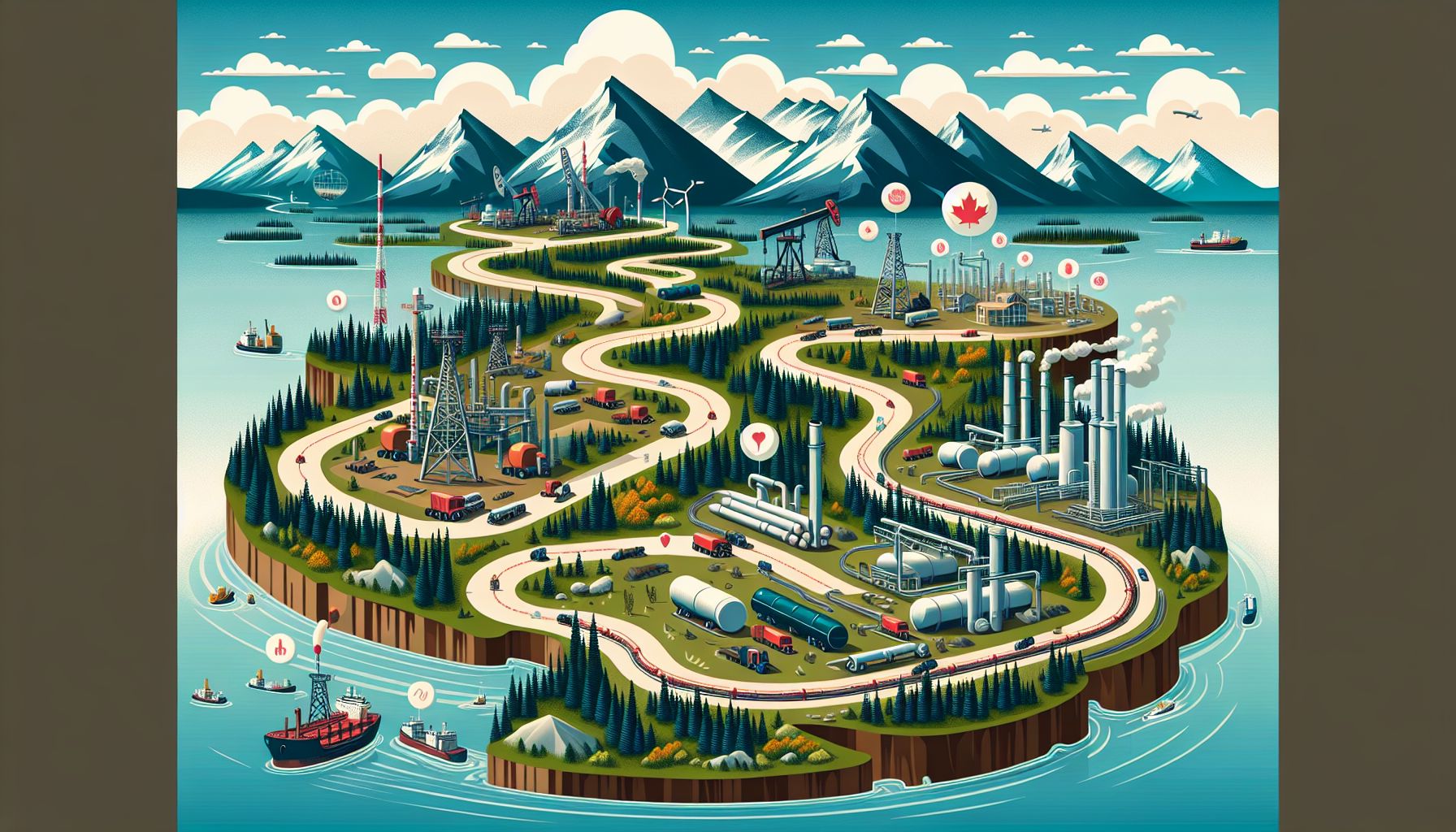
The Enigmatic Journey of Canada’s Oil & Gas Industry
Canada’s oil and gas industry has always been shrouded in mystery and complexity, with its vast resources and intricate network of players. From the extraction of oil sands in Alberta to the offshore drilling in the Atlantic, the industry’s journey has been both mesmerizing and enigmatic.
The history of Canada’s oil and gas industry dates back to the 19th century when the first oil well was drilled in Ontario. Since then, the industry has grown exponentially, becoming one of the largest contributors to the country’s economy. With companies like Suncor, Canadian Natural Resources, and Cenovus Energy leading the way, Canada has established itself as a global player in the oil and gas sector.
Despite its success, the industry has faced its fair share of challenges. Environmental concerns, regulatory issues, and fluctuating oil prices have all played a role in shaping the industry’s landscape. The debate around pipelines, such as the controversial Keystone XL and Trans Mountain projects, has further added to the complexity of the industry.
However, amidst all the challenges and controversies, Canada’s oil and gas industry continues to thrive. With advancements in technology, such as hydraulic fracturing and horizontal drilling, the industry has been able to access previously inaccessible resources. This has opened up new opportunities for growth and development, ensuring that Canada remains a key player in the global energy market.
The future of Canada’s oil and gas industry is uncertain, with the shift towards renewable energy and the increasing pressure to reduce greenhouse gas emissions. However, the industry has proven time and time again its resilience and ability to adapt to changing circumstances. With a mix of innovation, collaboration, and forward-thinking policies, Canada’s oil and gas industry is well-positioned to navigate the challenges ahead.
In conclusion, Canada’s oil and gas industry is a complex and enigmatic sector that continues to play a crucial role in the country’s economy. With its rich resources, technological advancements, and strategic partnerships, the industry is poised for continued success in the years to come. While the road ahead may be uncertain, one thing is for sure – the journey of Canada’s oil and gas industry is one that is bound to captivate and intrigue us all.

The Boom and Bust of Canada’s Oil & Gas Industry
Canada’s oil and gas industry has long been a driving force in the nation’s economy, with vast resources and booming production. However, the industry has also faced challenges and uncertainties, leading to periods of boom and bust.
One of the key factors contributing to the volatility of Canada’s oil and gas industry is the fluctuating global oil prices. As a major oil producer, Canada is heavily dependent on the price of oil in the international market. When oil prices are high, the industry experiences a boom, with increased investment, production, and job creation. However, when prices plummet, as seen in recent years, the industry faces challenges such as layoffs, project delays, and financial struggles.
Another factor that has impacted Canada’s oil and gas industry is environmental regulations and concerns. As the world becomes more focused on reducing greenhouse gas emissions and combating climate change, the oil and gas industry has come under increased scrutiny. This has led to stricter regulations, higher operating costs, and challenges in gaining public acceptance for new projects.
Despite these challenges, Canada’s oil and gas industry remains a critical part of the nation’s economy. The industry provides billions of dollars in revenue, supports thousands of jobs, and contributes to the country’s energy security. With vast reserves of oil and gas still untapped, the industry continues to play a significant role in Canada’s economic growth.
In recent years, the Canadian oil and gas industry has also seen advancements in technology and innovation. Companies are investing in new technologies to improve efficiency, reduce environmental impacts, and enhance safety. From hydraulic fracturing to oil sands extraction, Canadian companies are at the forefront of developing and implementing cutting-edge technologies in the oil and gas sector.
Looking ahead, the future of Canada’s oil and gas industry remains uncertain. The industry will need to navigate a complex landscape of shifting market dynamics, regulatory changes, and environmental pressures. However, with a history of resilience and innovation, Canada’s oil and gas industry is well-positioned to overcome these challenges and continue to thrive in the years to come.
In conclusion, Canada’s oil and gas industry is a complex and ever-changing sector that plays a critical role in the nation’s economy. From boom periods of high production and investment to busts of layoffs and economic challenges, the industry has weathered many storms. With ongoing advancements in technology and a focus on sustainability, Canada’s oil and gas industry is poised to remain a key player in the global energy market for years to come.
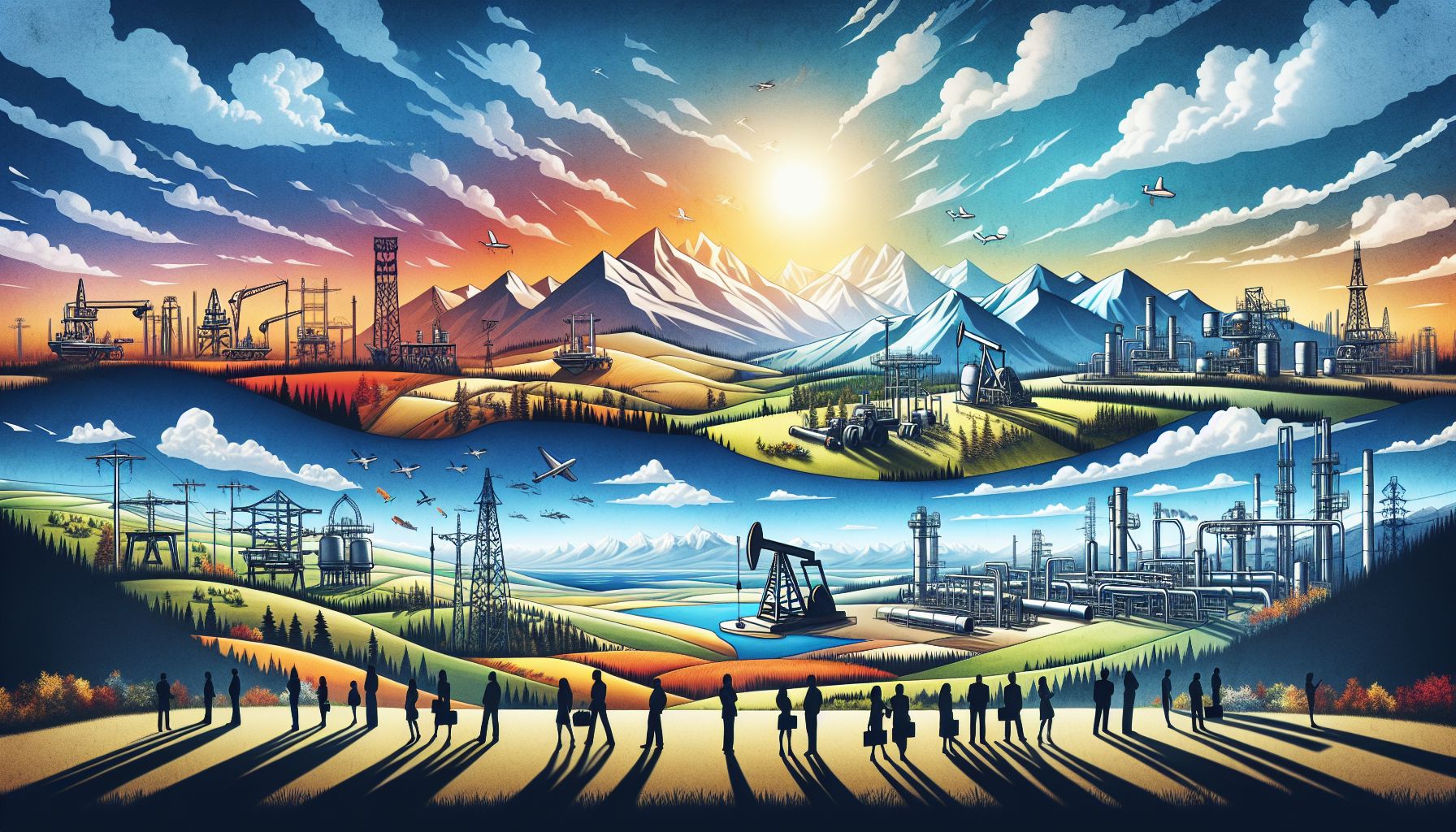
The Fluctuating Landscape of Canada’s Oil & Gas Industry
The oil and gas industry in Canada is a complex and ever-evolving sector that plays a crucial role in the country’s economy. From the extraction of natural resources to the refinement and distribution of products, the industry is a multifaceted network of companies, workers, and regulations.
In recent years, the landscape of the Canadian oil and gas industry has been subject to numerous changes and challenges. The industry has faced fluctuating oil prices, changing environmental regulations, and increased competition from other energy sources. These factors have created a sense of uncertainty and instability within the industry, leading to shifts in production, investment, and employment.
One of the key challenges facing the Canadian oil and gas industry is the issue of pipeline infrastructure. Pipelines are essential for transporting oil and gas from production sites to refineries and markets, but they have become a source of contention due to environmental concerns and opposition from Indigenous communities. The construction of new pipelines has been met with protests and legal challenges, creating delays and uncertainty for industry stakeholders.
Despite these challenges, the Canadian oil and gas industry remains a vital component of the country’s economy. It contributes billions of dollars to GDP and provides thousands of jobs across the country. The industry also plays a key role in meeting domestic energy needs and supporting other sectors of the economy, such as manufacturing and transportation.
In recent years, there has been a growing emphasis on sustainability and environmental responsibility within the oil and gas industry. Companies are investing in clean technologies, reducing their carbon footprint, and exploring alternative energy sources. This shift towards sustainability is not only driven by regulatory requirements but also by consumer demand for environmentally friendly products and practices.
The future of the Canadian oil and gas industry is uncertain, with many factors influencing its trajectory. Global oil prices, government policies, technological advancements, and public perception all play a role in shaping the industry’s future. As the industry continues to adapt to these changes, it will be crucial for stakeholders to collaborate, innovate, and transform in order to remain competitive and sustainable in the long run.
In conclusion, the Canadian oil and gas industry is a dynamic and complex sector that is constantly evolving in response to internal and external pressures. While facing challenges such as fluctuating oil prices, environmental regulations, and pipeline opposition, the industry remains a crucial pillar of the country’s economy. By embracing sustainability, innovation, and collaboration, the industry can navigate the uncertain landscape ahead and continue to thrive in the years to come.
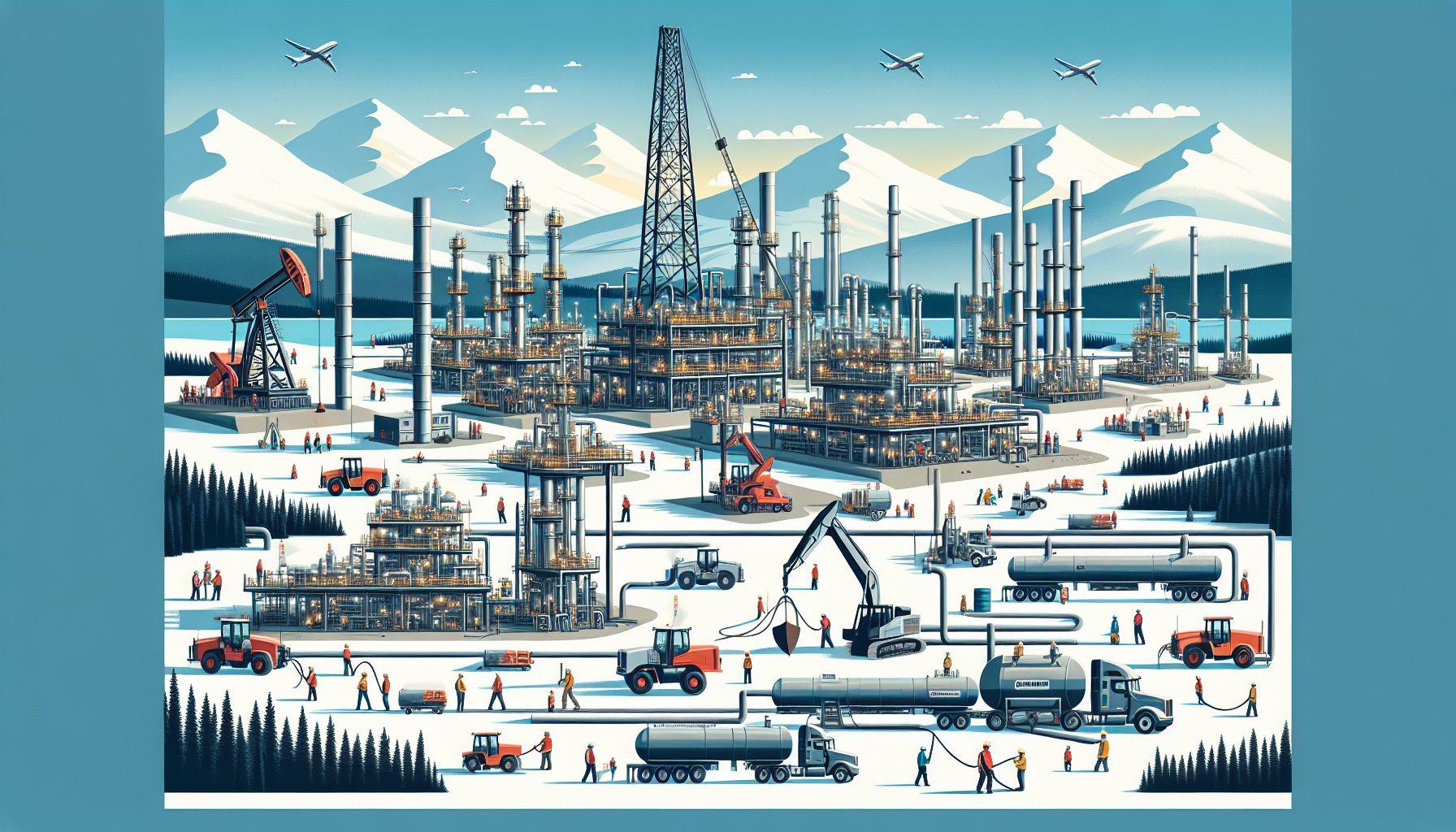
The Fascinating World of Canada’s Oil & Gas Industry
The oil and gas industry in Canada is a complex and thriving sector that plays a vital role in the country’s economy. With vast reserves of natural resources, including oil sands and conventional oil and gas deposits, Canada is a significant player in the global energy market. From drilling rigs to pipelines, refineries to export terminals, the industry encompasses a wide range of activities and technologies that keep the world moving.
One fascinating aspect of the oil and gas industry in Canada is the sheer scale of operations. The country is home to some of the largest oil sands deposits in the world, with Alberta’s Athabasca region alone estimated to contain over 165 billion barrels of oil. To extract this valuable resource, companies invest billions of dollars in mega-projects that require advanced technology and expertise.
Despite its importance, the oil and gas industry in Canada is not without its challenges. Environmental concerns, indigenous rights, and market volatility are just a few of the issues that companies must navigate. The push for cleaner energy sources and increased regulation present both threats and opportunities for the industry, requiring innovative solutions and strategic planning.
One area of particular interest is the development of renewable energy technologies within the oil and gas sector. Companies are increasingly investing in solar, wind, and geothermal projects to diversify their portfolios and reduce carbon emissions. The integration of these technologies with traditional oil and gas operations presents a unique opportunity to drive sustainability and long-term growth.
Another intriguing aspect of the oil and gas industry in Canada is its impact on local communities. From job creation to infrastructure investment, the industry plays a significant role in supporting economic development in remote regions. At the same time, concerns about land use, water usage, and air quality must be addressed to ensure a sustainable future for all stakeholders.
In conclusion, the oil and gas industry in Canada is a dynamic and multifaceted sector that continues to evolve in response to changing market dynamics and societal pressures. From resource extraction to environmental stewardship, companies are navigating a complex landscape that requires creativity, innovation, and collaboration. By embracing new technologies and sustainable practices, the industry can position itself for long-term success while contributing to Canada’s energy security and prosperity.
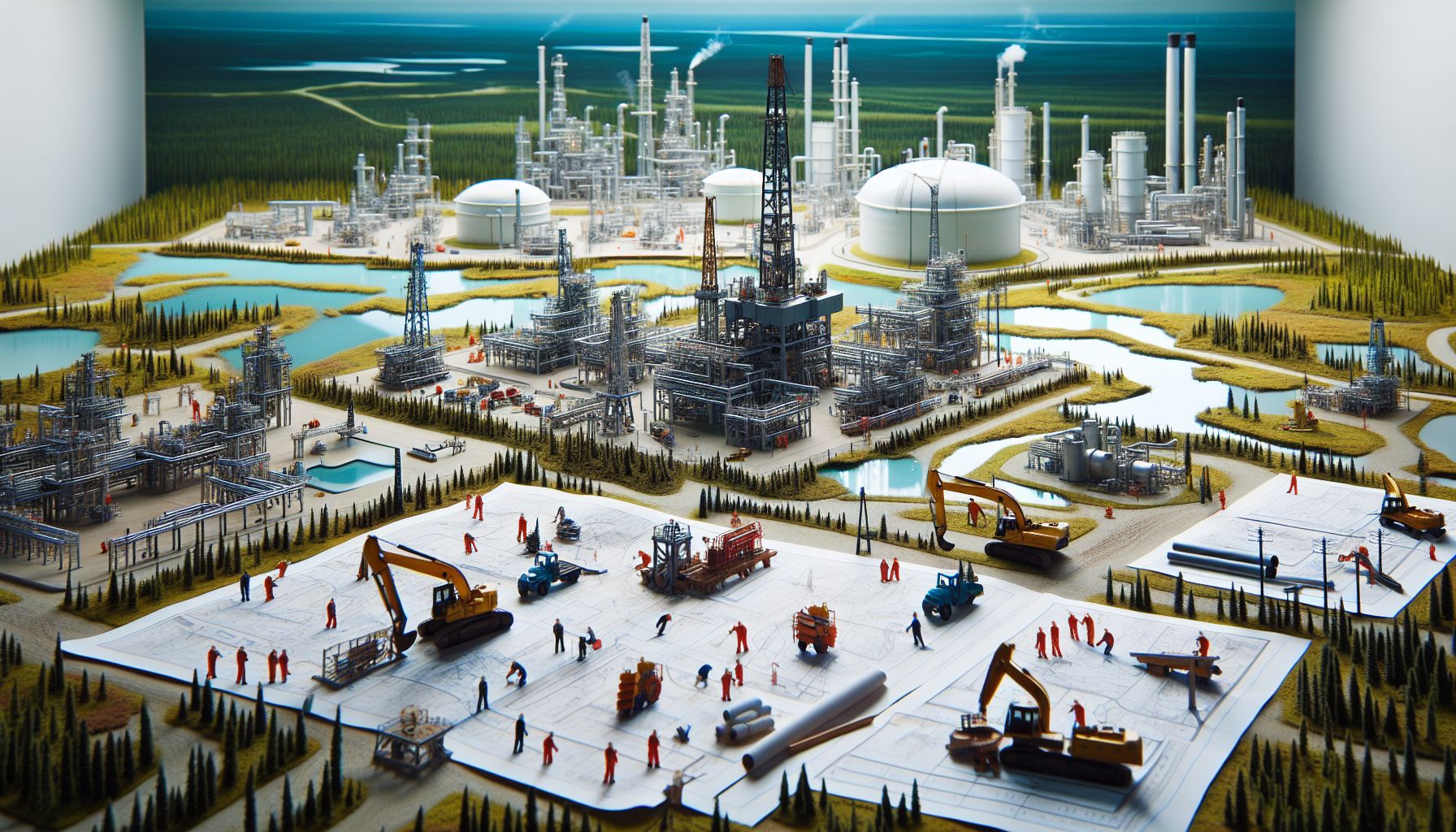
The Oil & Gas Industry in Canada: A Unique Perspective
Canada’s oil and gas industry is a complex and vital part of the nation’s economy. With vast resources and a high level of technological innovation, Canada has established itself as a key player in the global energy market. However, there are many nuances and intricacies to this industry that often go unnoticed.
One of the most interesting aspects of the oil and gas industry in Canada is its unique blend of traditional extraction methods and cutting-edge technology. While many people think of oil rigs and pipelines when they think of this industry, there is actually a great deal of innovation happening behind the scenes. From remote-controlled drilling equipment to advanced seismic imaging techniques, Canadian companies are constantly pushing the boundaries of what is possible in oil and gas extraction.
Another fascinating aspect of the oil and gas industry in Canada is its impact on the environment. While there is no denying that extracting and burning fossil fuels has an environmental cost, Canadian companies are leading the way in developing cleaner and more sustainable methods of energy production. From carbon capture and storage to renewable energy projects, the industry is constantly evolving to meet the challenges of climate change.
Of course, no discussion of the oil and gas industry in Canada would be complete without mentioning the geopolitical and economic factors at play. Canada is a major exporter of oil and gas, with the United States being its largest trading partner. This makes the industry a key player in international politics and economics, with fluctuations in the price of oil having far-reaching effects on the Canadian economy.
In conclusion, the oil and gas industry in Canada is a complex and multifaceted sector that plays a crucial role in the nation’s economy. From innovative technologies to environmental challenges, there is no shortage of fascinating aspects to this industry. As Canada continues to grapple with the transition to a low-carbon future, the industry will be forced to adapt and evolve in new and unexpected ways. It is truly an industry like no other, with a rich history and a promising future.
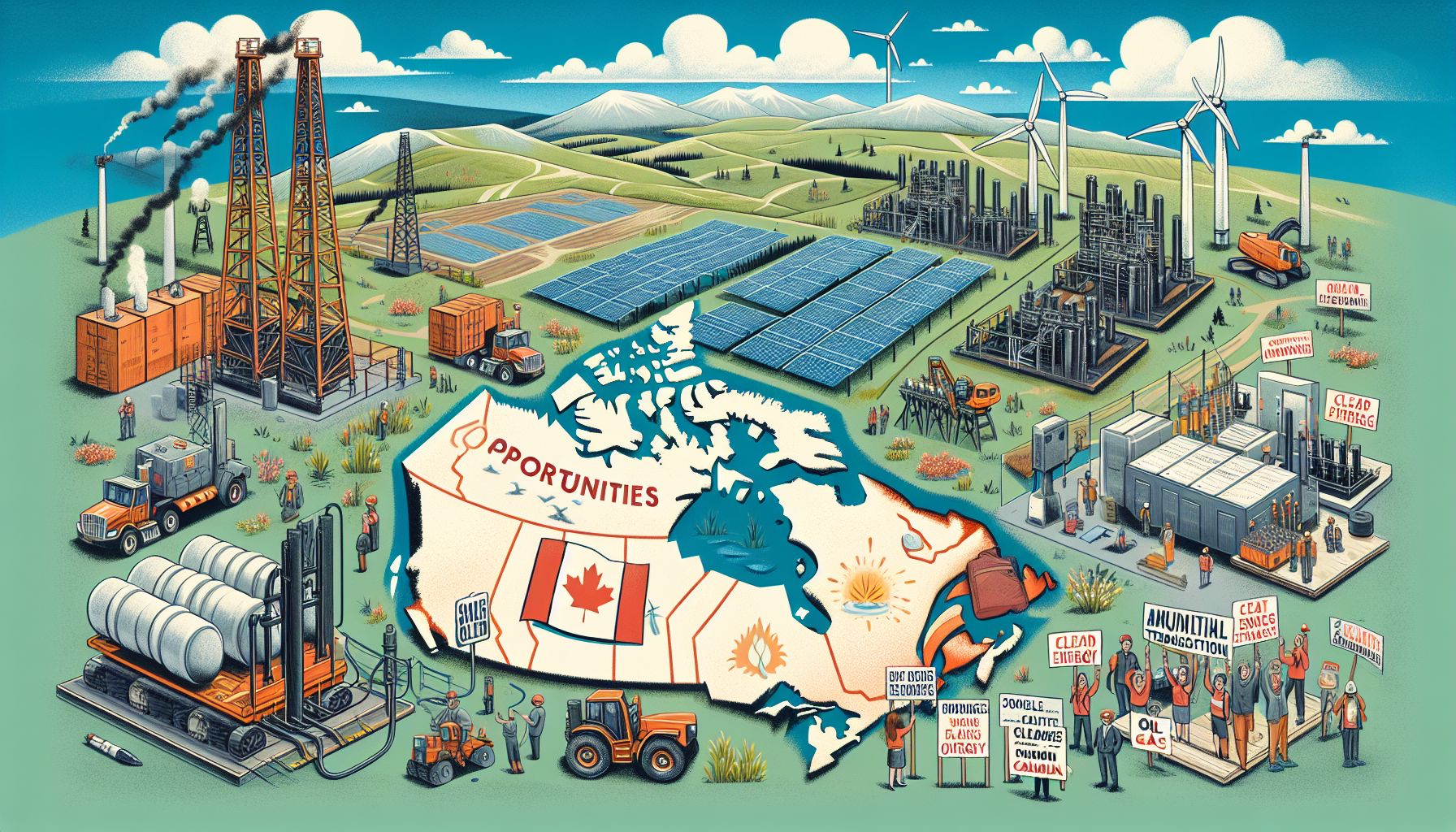
Canada’s Oil & Gas Industry: Challenges and Opportunities
The oil and gas industry in Canada has long been a major player in the country’s economy, contributing significantly to both GDP and employment. However, in recent years, the sector has faced a number of challenges that have raised questions about its future. From low oil prices to environmental concerns, the industry is at a crossroads.
One of the biggest challenges facing the oil and gas industry in Canada is the price of oil. With global production at an all-time high and demand slowing down, prices have plummeted, putting pressure on companies and causing layoffs in the sector. This has had a ripple effect on the Canadian economy, leading to decreased government revenues and a slowdown in economic growth.
In addition to the price of oil, the industry is also facing increasing scrutiny over its environmental impact. Concerns about climate change and the role of fossil fuels in exacerbating the problem have led to calls for stricter regulations on emissions and a transition to cleaner sources of energy. This has put pressure on oil and gas companies to reduce their carbon footprint and invest in renewable energy technologies.
Despite these challenges, the oil and gas industry in Canada also presents opportunities for growth and innovation. With abundant natural resources and a skilled workforce, the sector has the potential to lead the way in technological advancements and sustainable practices. From investing in alternative fuels to developing carbon capture and storage technologies, there are many ways that companies can adapt to a changing energy landscape.
One area of particular interest is the potential for increased collaboration between the oil and gas industry and other sectors, such as renewable energy and technology. By working together to develop new solutions and approaches, companies can leverage their expertise and resources to drive innovation and create a more sustainable future.
Overall, the oil and gas industry in Canada is at a critical juncture. While facing challenges from low oil prices and environmental concerns, there are also opportunities for growth and innovation. By investing in new technologies and practices, companies can position themselves for success in a rapidly changing energy landscape.
In conclusion, the oil and gas industry in Canada is facing challenges but also presents opportunities for growth and innovation. By addressing environmental concerns and investing in new technologies, companies can adapt to a changing energy landscape and continue to play a key role in the country’s economy. It will be interesting to see how the sector evolves in the coming years and what impact it will have on Canada’s overall energy strategy.




